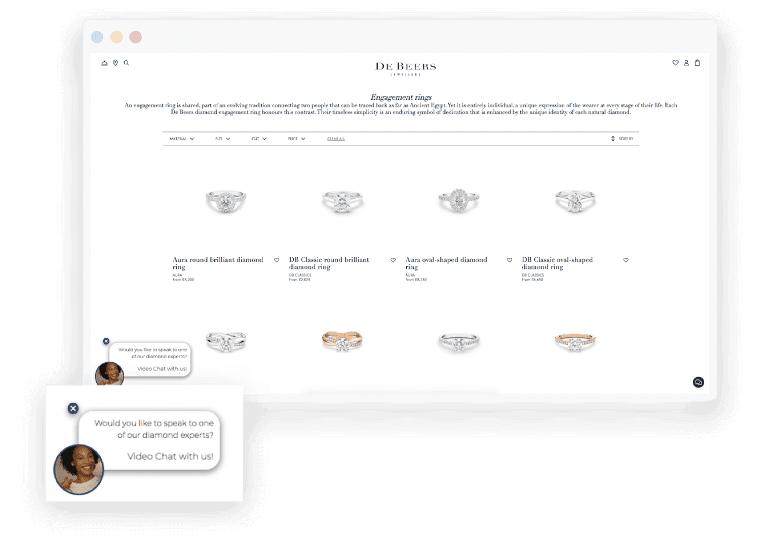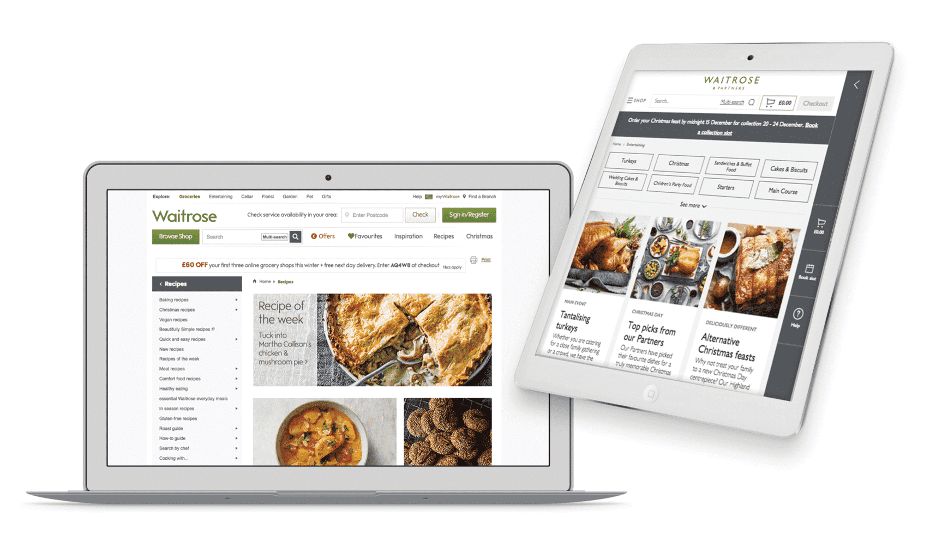
3 Real Examples of Successful Customer Journey Optimization
How are leading brands deploying customer journey optimization successfully? What tools and tactics are they using to ensure personalized experiences? In this post, we share three real-life optimization examples from three different phases of the customer journey.
This guest blog post is courtesy of our customer experience optimization partner, Contentsquare.
At Contentsquare, we’re focused on helping brands optimize their digital experiences throughout the digital customer journey. Our platform provides the right tools to enable you to understand your customer behavior, enhance your website personalization efforts and optimize your customer journeys, from entry to exit. So, that’s why we’ve gathered our top three digital customer journey optimization use cases from the three leading brands below.
Example #1: Optimizing the Engagement stage
During this part of the digital customer journey, it’s crucial to show visitors you understand them, who they are and what they want. To give you inspiration, here’s what diamond company, De Beers did to optimize the journey for their engagement ring customers:
De Beers uses Customer Journey Analysis to optimize its new online experience.
After launching a brand new eCommerce proposition that allows customers to buy individual diamonds online from anywhere in the world, De Beers wanted to remain agile by reacting to customer behavior.
They used Contentsquare’s Customer Journey Analysis and Zone-Based Heatmaps to analyze and test optimizations. They started by analyzing jewelry customers vs bridal customers looking for engagement rings and noticed that users navigating to engagement rings were browsing more and spending more time on the pages.
So, they launched a test to direct these customers to book an appointment once they had been browsing for a certain amount of time. Testing appointment pop-ups personalized for engagement ring customers resulted in a +27% average conversion to in-store appointment requests from bridal product pages. Not bad!

Example #2: Optimizing the Purchase stage
At this stage, your customers are ready to convert — and your job is to make this process as smooth and simple as possible for them. Here’s a prime example of how to use behavioral data on checkout pages to boost conversions:
Rakuten leverages data to enhance its checkout page
Online retailing company, Ratuken noticed that the conversion rate on their shopping cart page was lower than expected and users weren’t adding items to their carts. To find out why this was happening, they used customer behavioral data to uncover and remove any friction in the user journey.
By analyzing the in-page behavior of new visitors and returning customers, they found that non-buyers were spending 15 seconds longer on the page than converting users. Armed with this data, Rakuten decided to split the existing single long checkout page into four quick steps:
- Initiate checkout
- Shipping
- Payment
- Order confirmation
This helped new customer segments better understand and navigate their way through the process, increasing conversions from Initiate Checkout to Shipping by 10%.
Example #3: Optimizing the Retention stage
The customer journey doesn’t end when a customer buys — Ideally, those first-time buyers will turn into returning customers. At this stage, you’ll also have more insight into your customers to ensure you offer relevant content and personalized experiences. Find out what Waitrose does to entice and re-engage their customers:
Waitrose re-engages returning customers using AI
When UK grocery retailer Waitrose wanted to optimize digital journey online to match their popular in-store experience, they turned to the power of machine learning.
By combining CRM customer data with behavioral targets from the Monetate Personalization platform on their homepage to drive click-throughs to the recipe page. Not only did this increase engagement levels by 67%, but it also helped Waitrose understand their different customer segments better. They found that young professionals in London were interacting more with quick, simple recipes during their busy working week. This insight meant they were better able to target this customer segment with more relevant messaging and re-engage with them throughout the customer journey.

Powering your personalized customer journey
Want to deliver a personalized digital experience throughout your customer journey? Monetate and Contentsquare have partnered to help you visually analyze experiences as your customers see them. Our integration empowers you to personalize at scale in real-time, identify your biggest UX opportunities within minutes and create more uplift. Learn more about the integration here.
Monetate Guest Blog – About the Author
Nea Bjorkqvist is a Content Marketing Manager at Contentsquare based in London. With six years of experience in the SaaS industry, she’s passionate about creating engaging, compelling content that drives traffic and converts. Despite living in the big city, she loves nature and spends most weekends hiking in the countryside!

